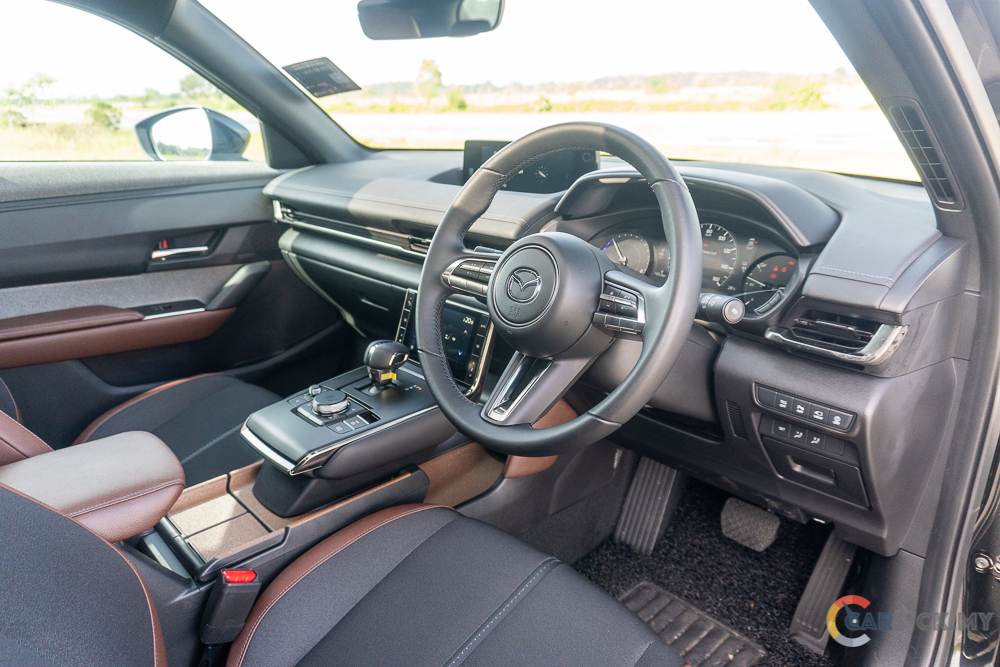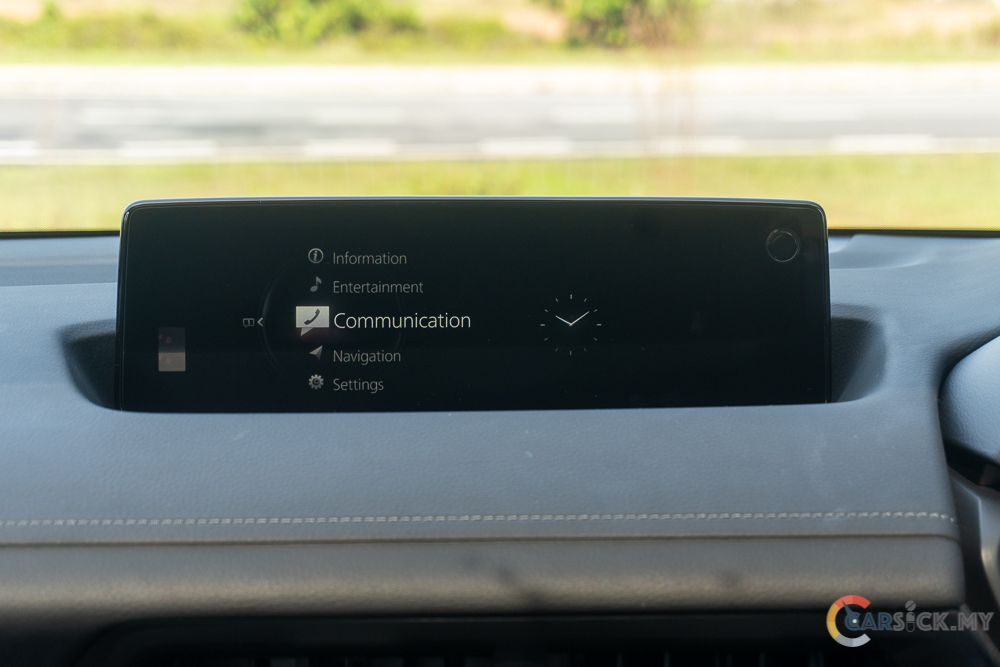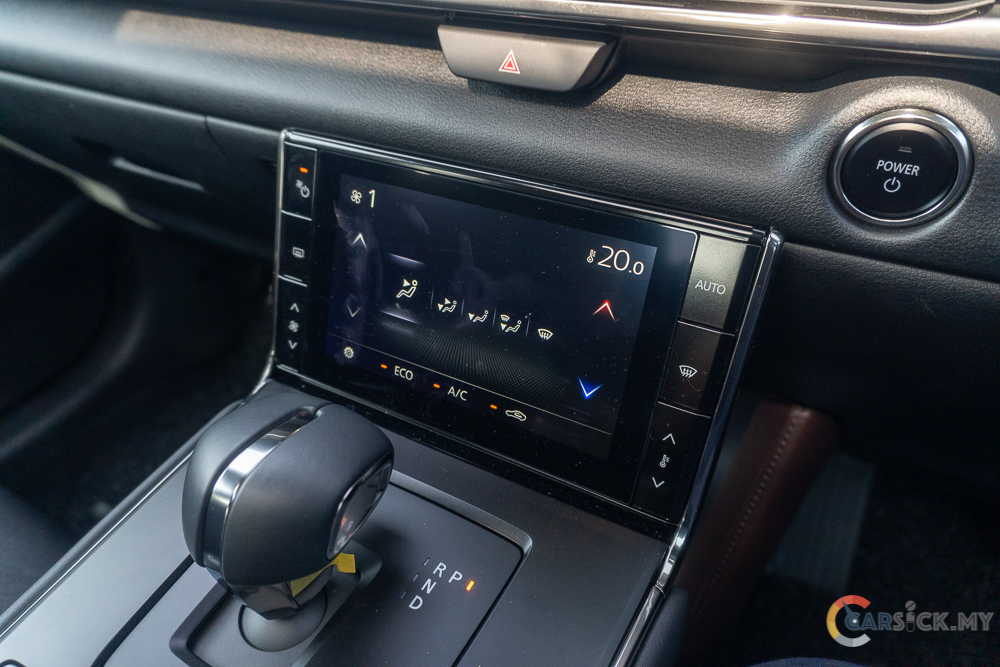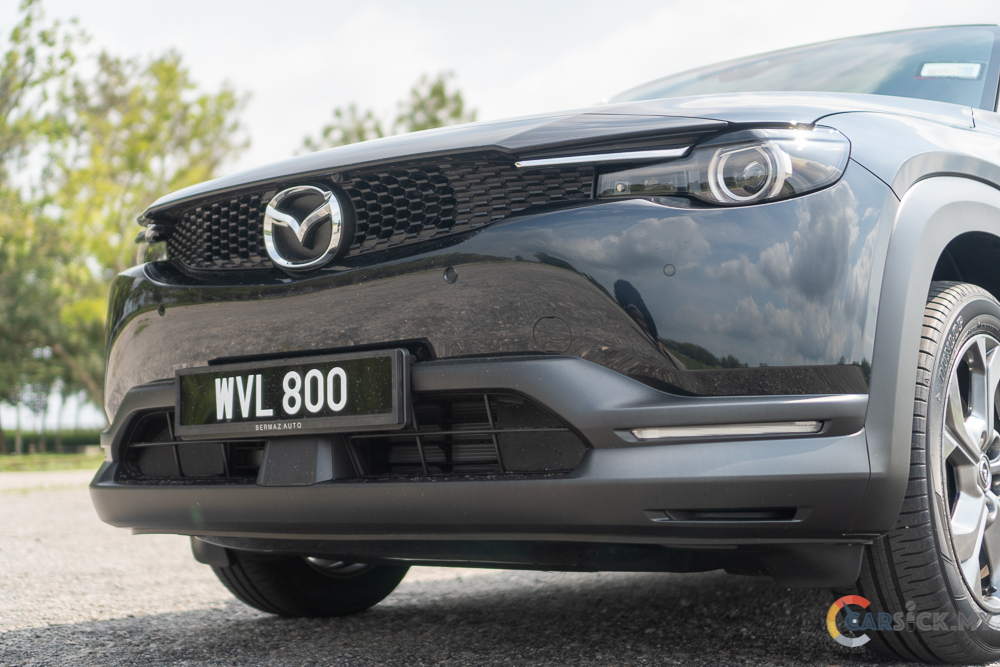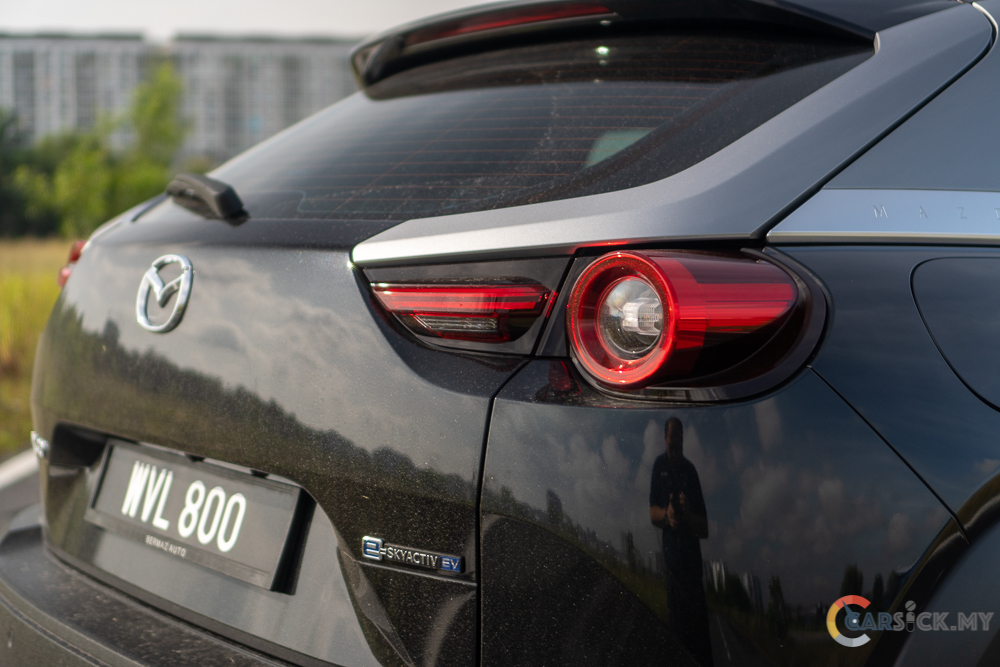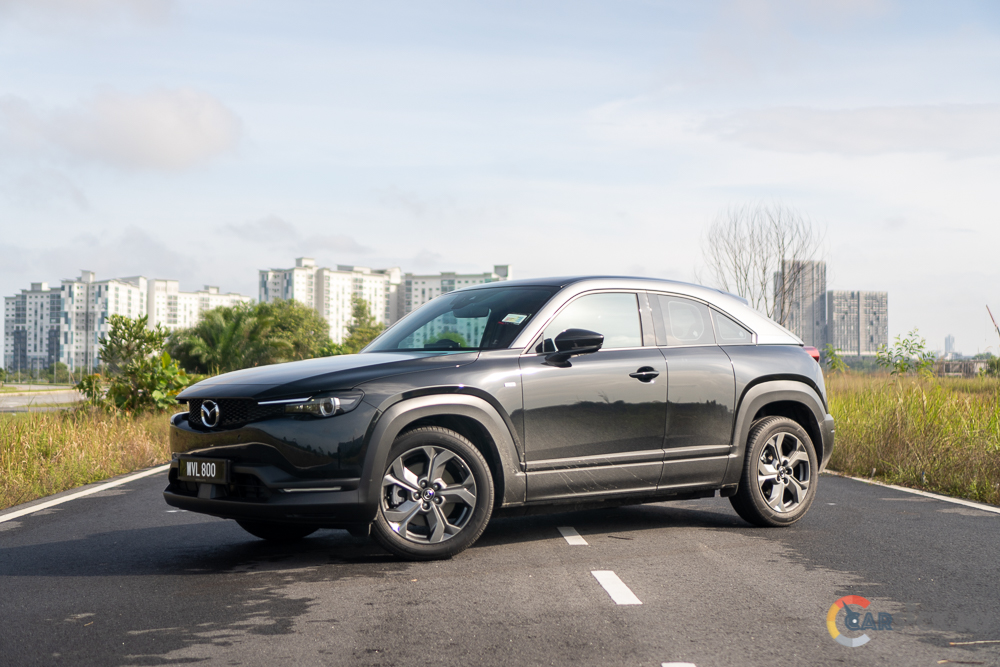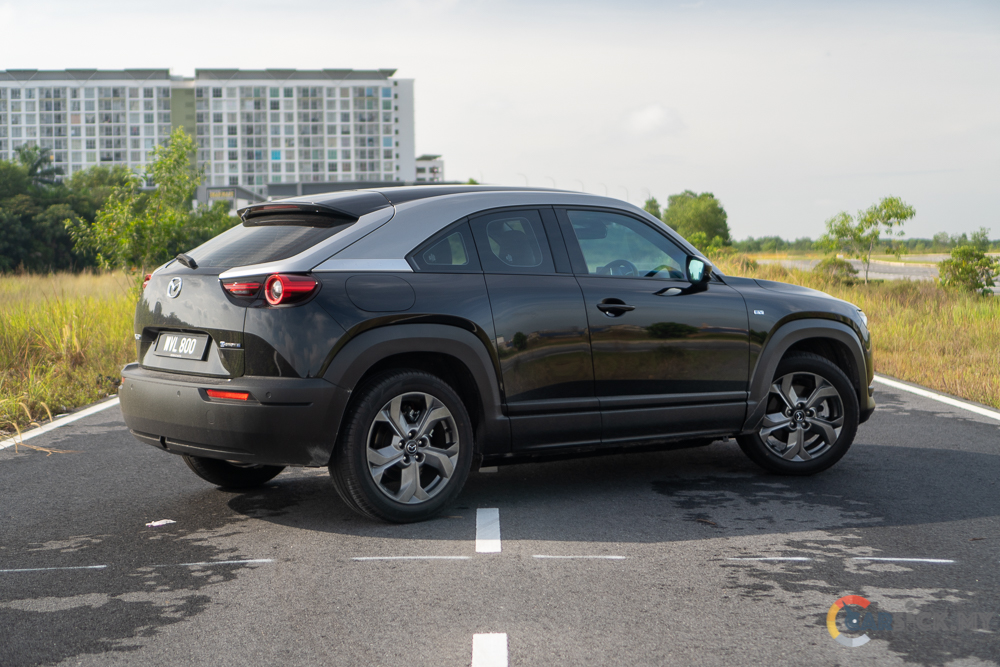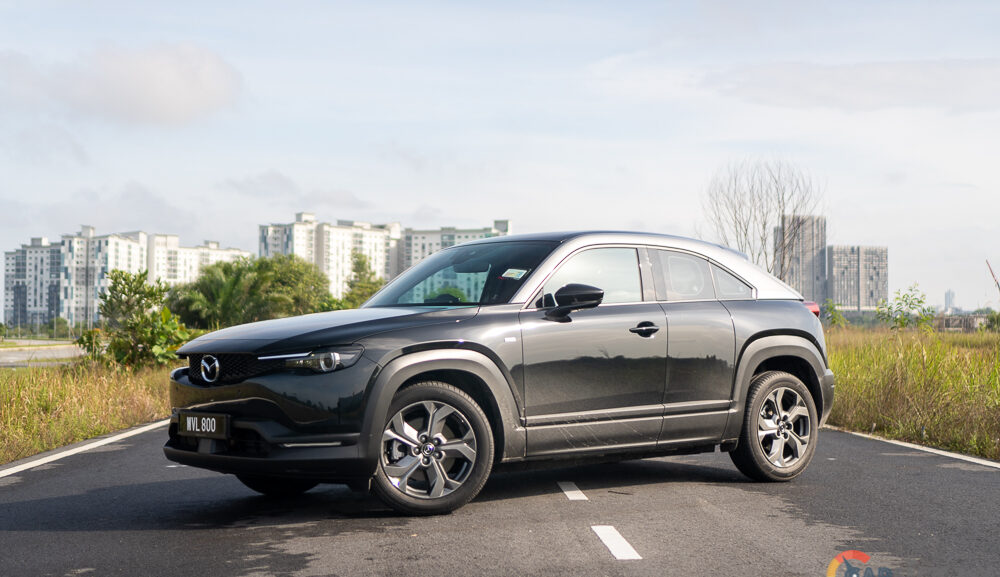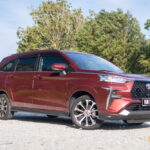When it comes to introducing electric vehicles, Japanese brands have been relatively slow. Currently, most of these brands offer only 1 or 2 electric vehicle models in their line-up. Mazda, for instance, has only one electric vehicle for sale worldwide – the Mazda MX-30, which was specifically designed to be a city runabout. In this article, we will take a closer look at the Mazda MX-30 and assess whether its 200 km range is adequate for daily use.
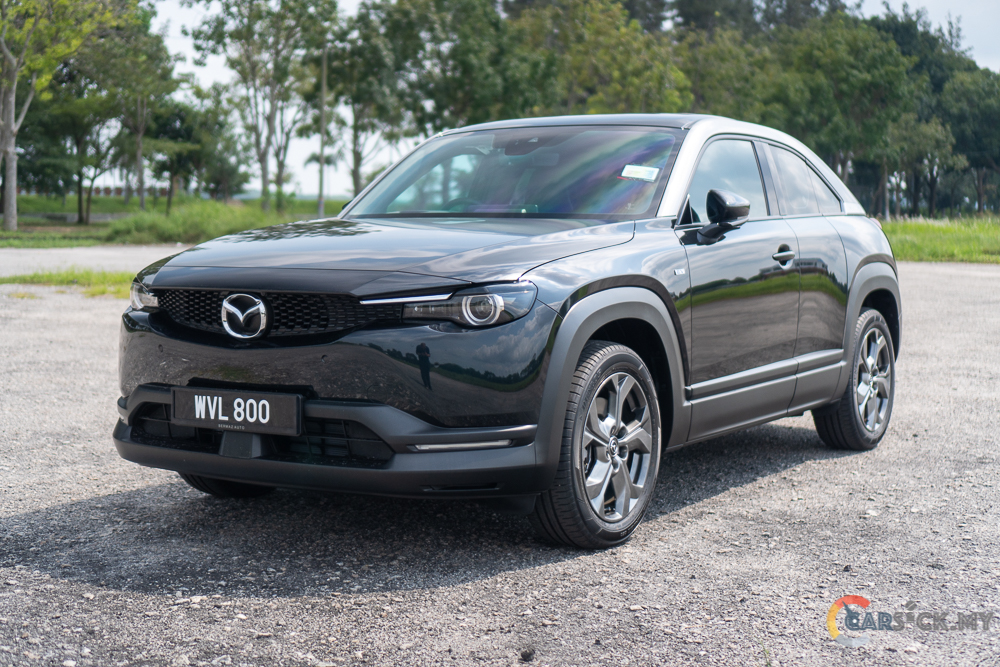
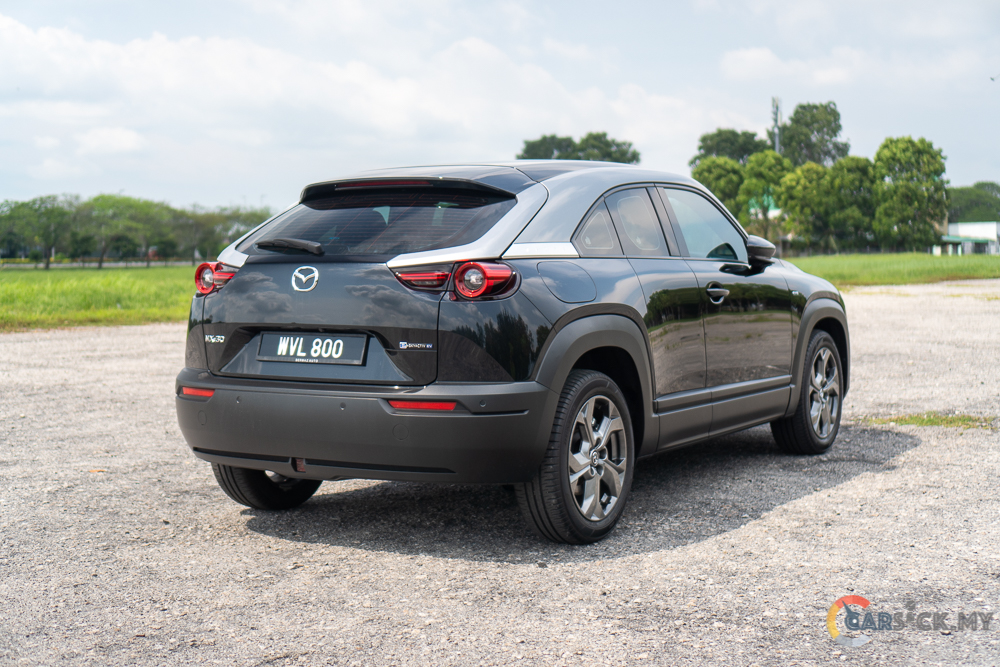 Interestingly, this EV features an engine bay that was intentionally designed to accommodate an internal combustion engine range extender, which was launched globally not long ago. The MX-30, despite its distinct appearance, is rooted in the CX-30. Nevertheless, Mazda’s designers have dedicated considerable energy to adjusting the proportions to set it apart from the CX-30. Externally, the MX-30 is an attractive SUV, with well-placed curves and bodylines that create a coupe-like profile.
Interestingly, this EV features an engine bay that was intentionally designed to accommodate an internal combustion engine range extender, which was launched globally not long ago. The MX-30, despite its distinct appearance, is rooted in the CX-30. Nevertheless, Mazda’s designers have dedicated considerable energy to adjusting the proportions to set it apart from the CX-30. Externally, the MX-30 is an attractive SUV, with well-placed curves and bodylines that create a coupe-like profile. 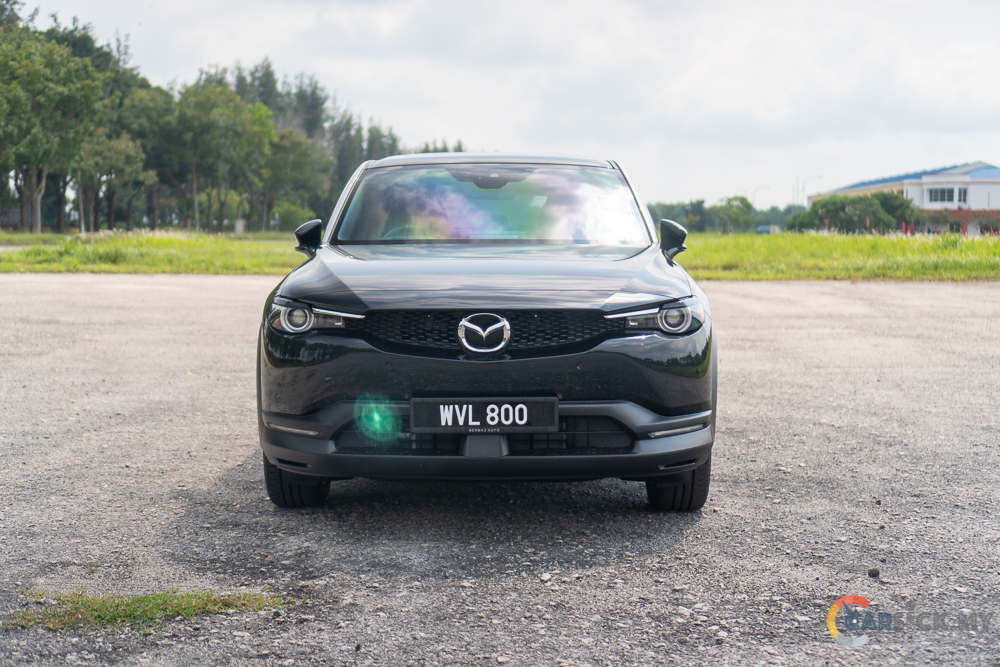
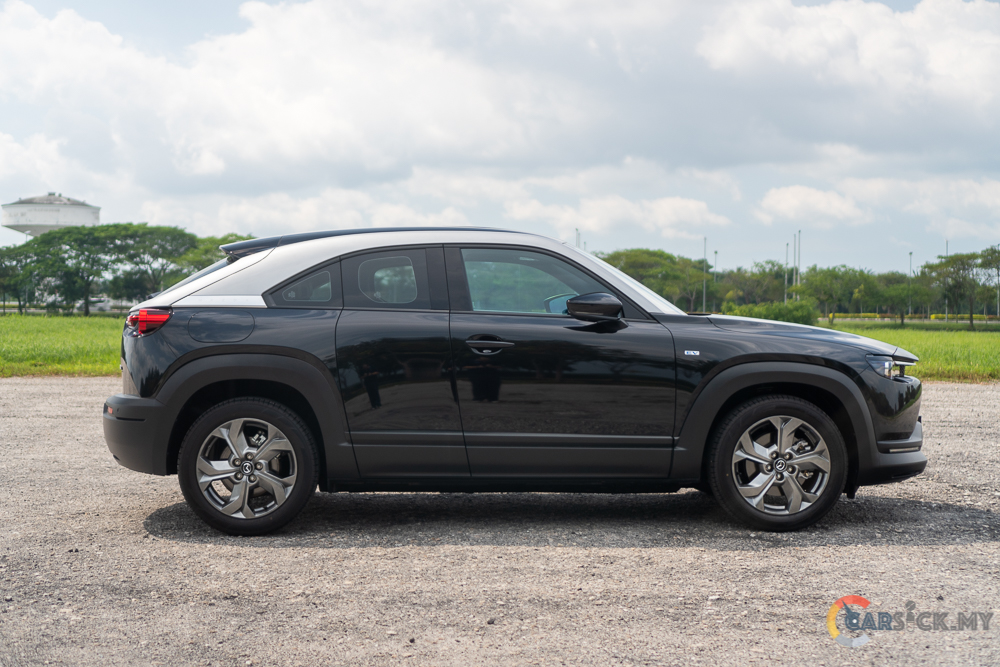
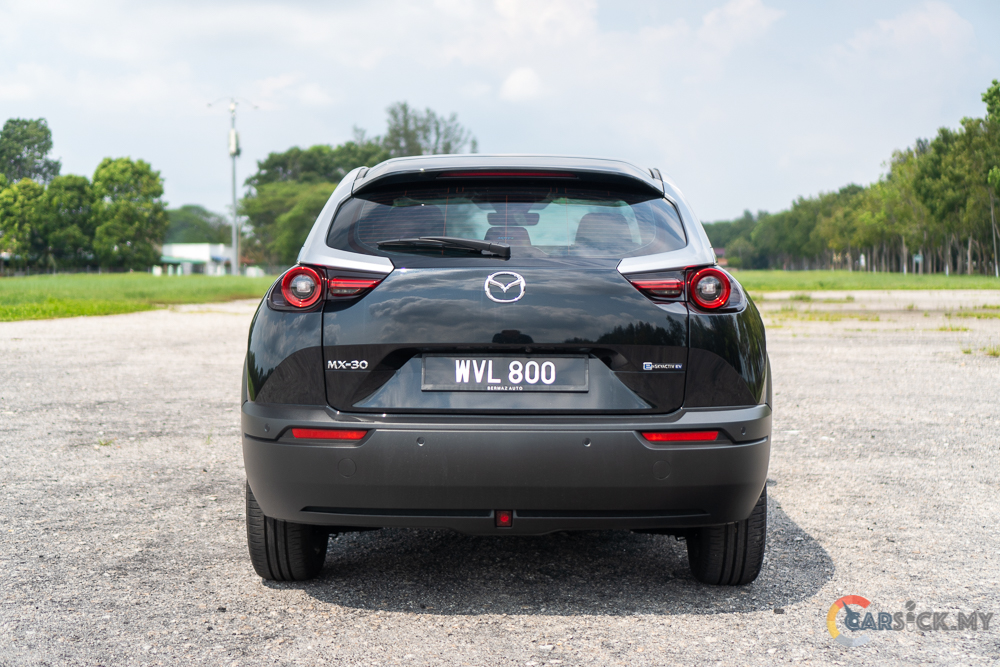
Mazda has taken steps to ensure that the MX-30 stands out from the crowd. A dual tone paint job has been applied to distinguish the top half and the bottom half of the vehicle. In addition, the plastic cladding enhances the car’s sturdiness and complements its appearance. The C-pillar features a Mazda plaque that has the brand’s name engraved on it, making it more noticeable throughout the vehicle. Furthermore, the MX-30 is fitted with full LED headlights and taillights, which contribute to its modern and chic appearance. 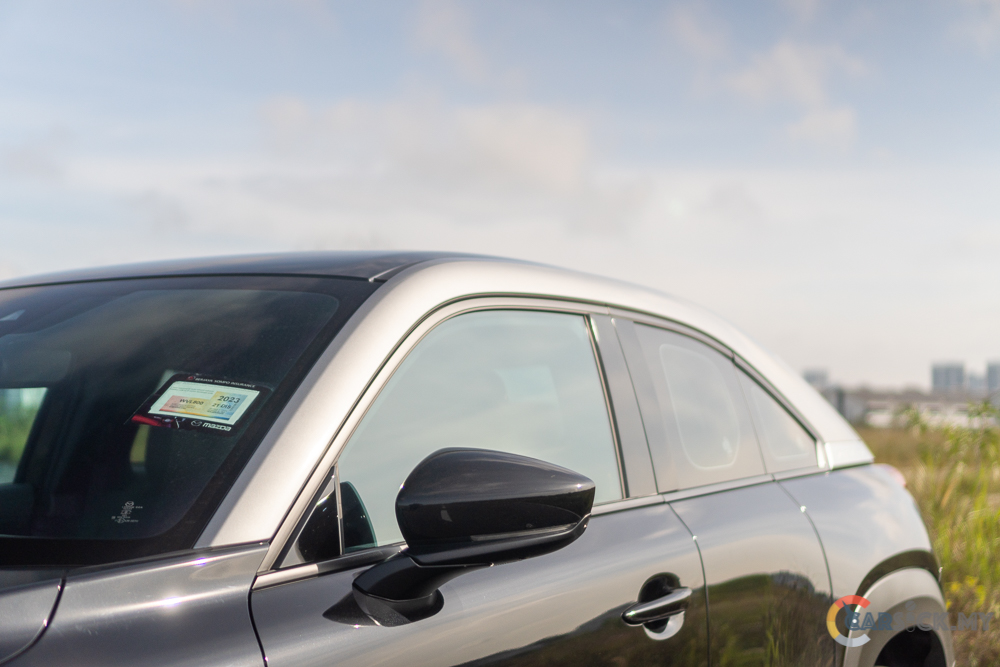
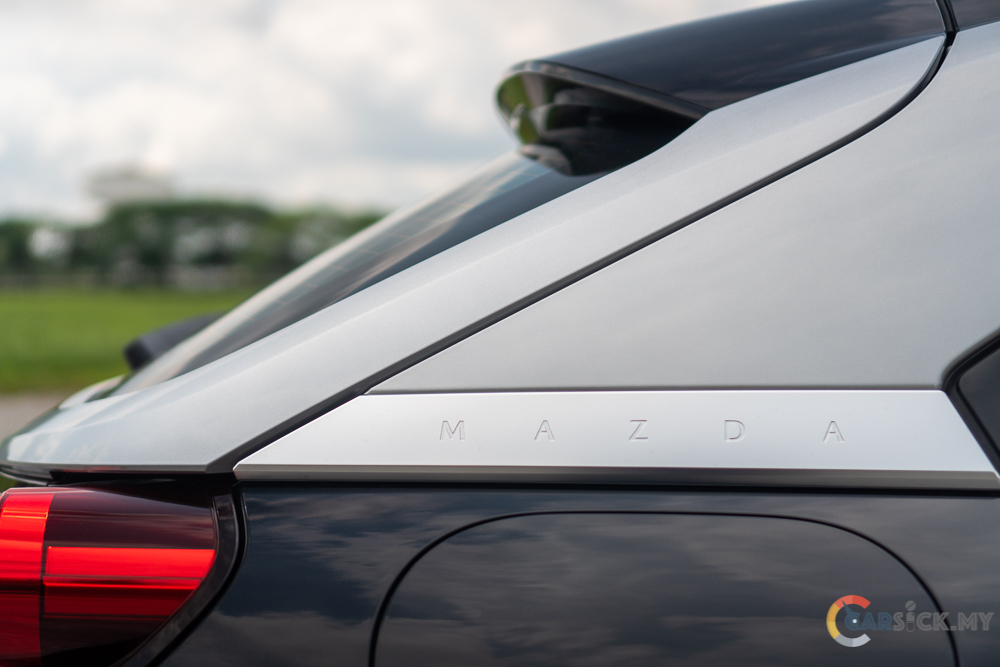
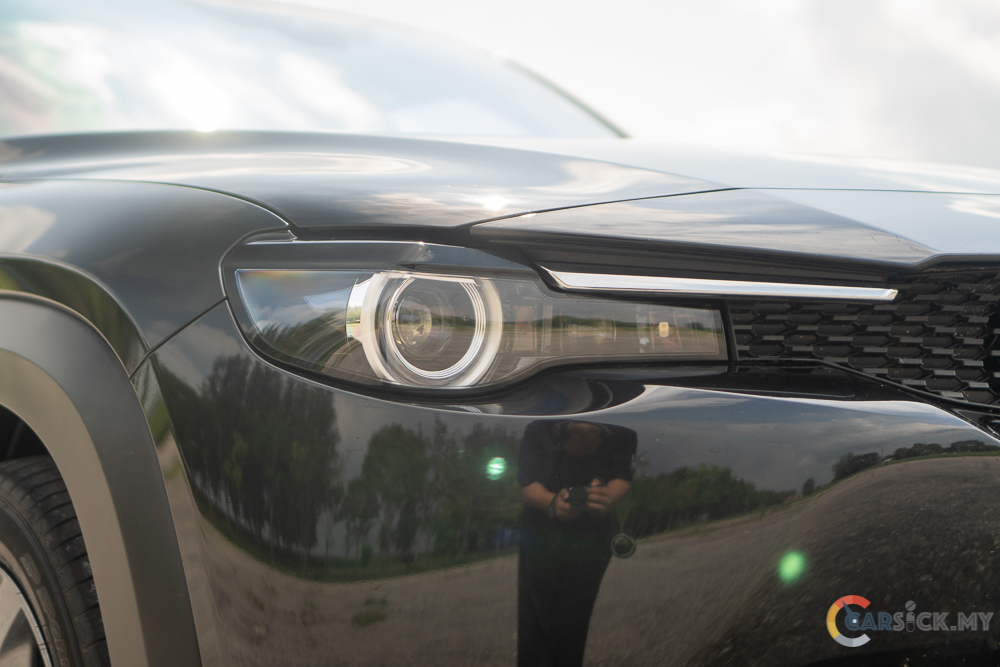
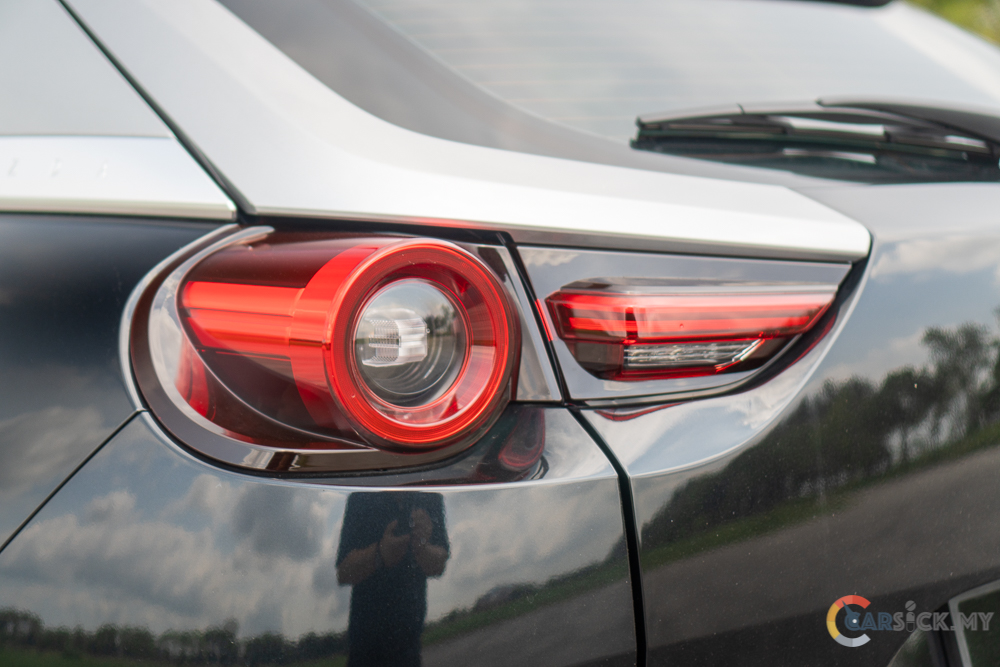
The MX-30 stands out with its uncommon suicide doors, a feature not frequently found on any vehicle at this price point. These doors not only facilitate access for rear passengers but also serve as a flashy gimmick to impress others. Although the MX-30 boasts modern elements, I was taken aback by the lack of a powered tailgate. Furthermore, the vehicle features a petite sunroof positioned at the top, which illuminates the cabin with natural light. Finally, the MX-30 sports 18-inch rims covered in 215/55 R18 tyres, which complement its aesthetics, yet the plastic cladding surrounding the car diminishes their size. 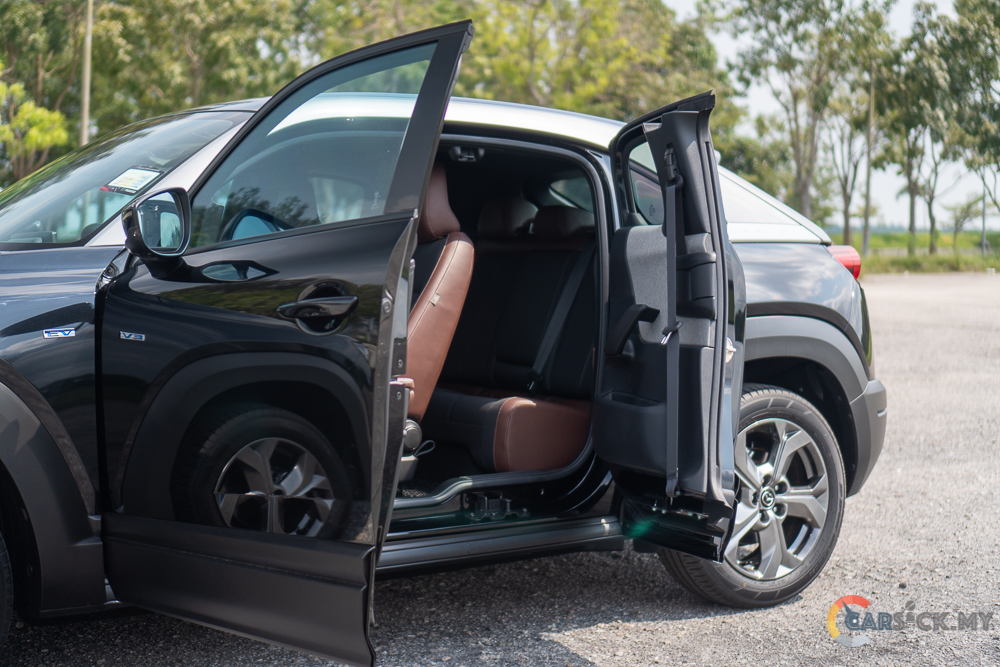
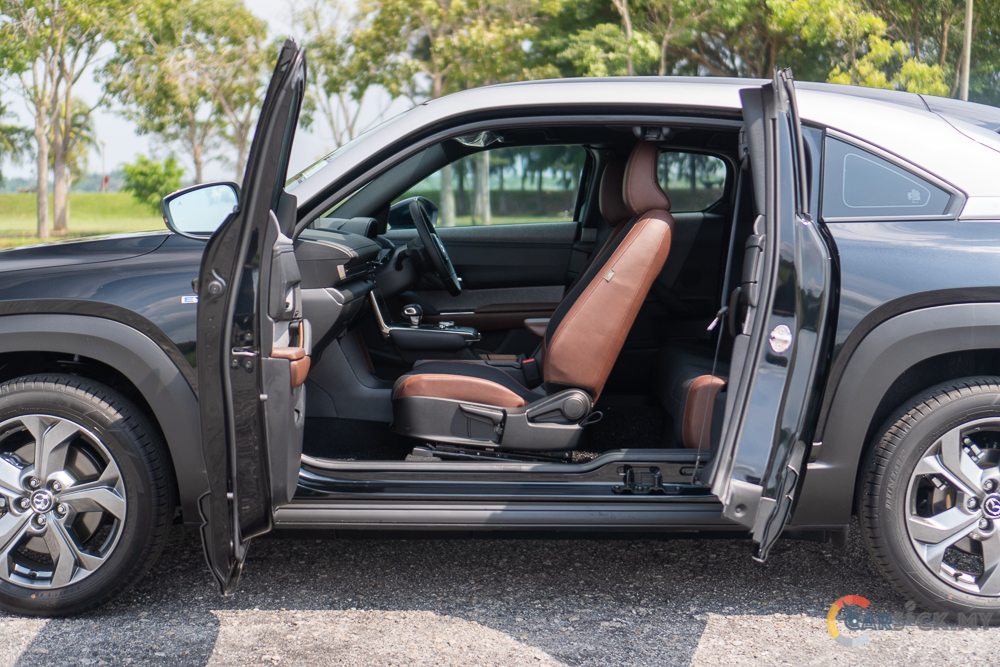
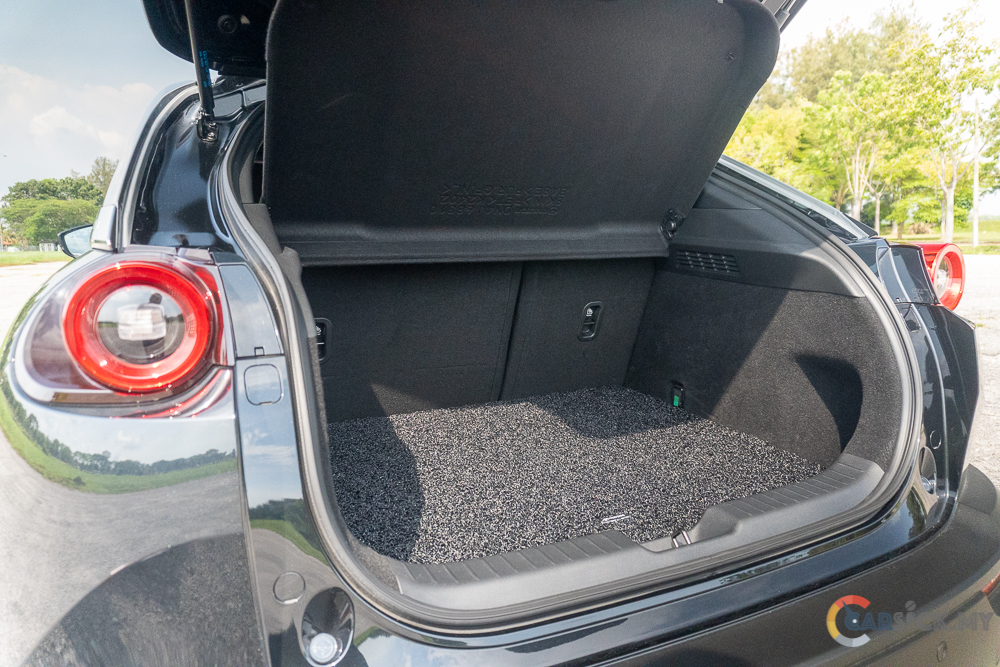
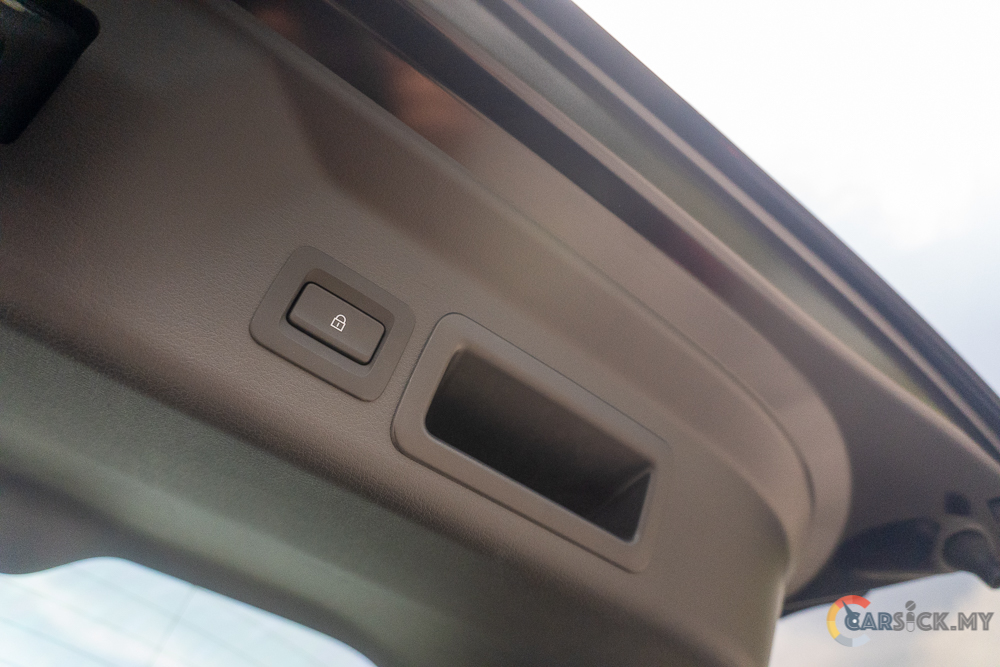
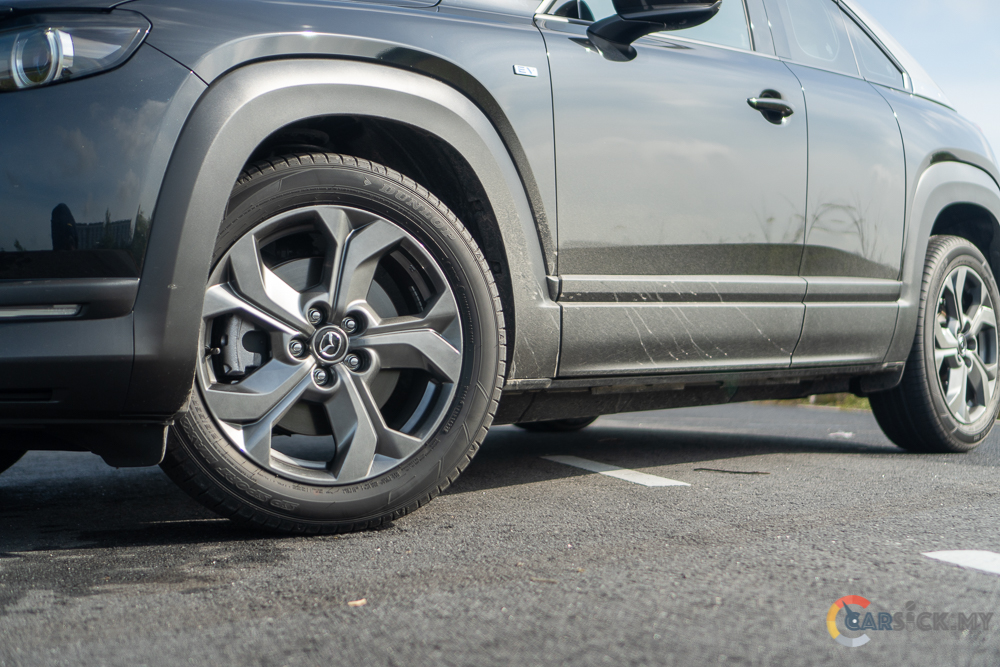
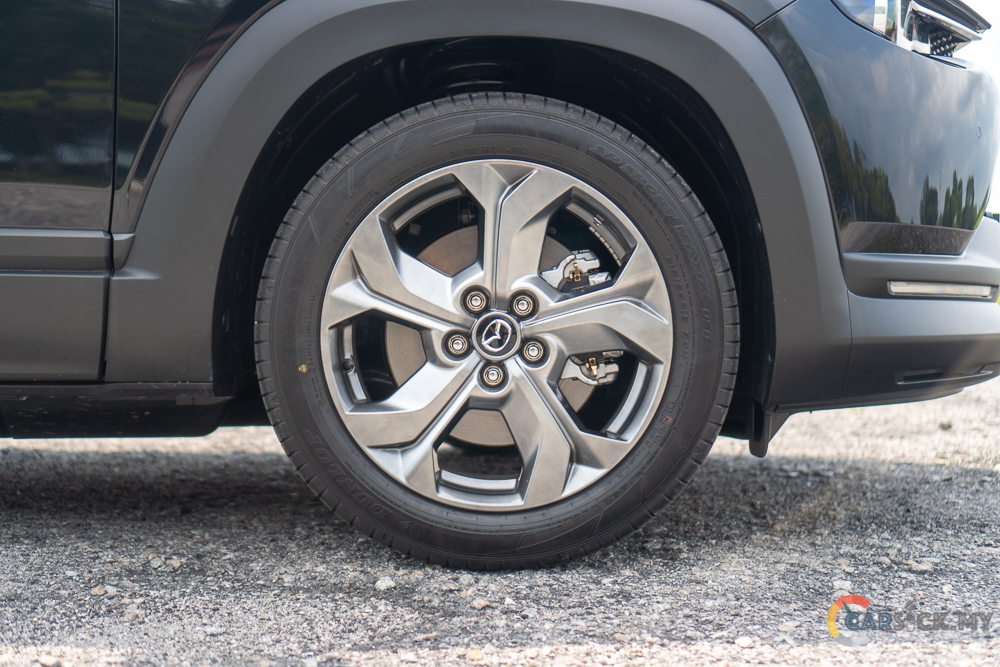
Upon entering the cabin, you will notice a contemporary and refreshed interior design that sets it apart from the CX-30. Despite utilizing several components from the CX-30 parts bin, the cabin’s overall aesthetics would suggest otherwise. The blend of diverse materials Mazda used in the cabin is noteworthy as it adds a touch of luxury. Moreover, the use of cork as one of the materials inside the cabin is a standout feature that represents Mazda’s history of producing cork. What’s more fascinating is that the cork actually emanates the distinctive aroma of cork, making the cabin even more intriguing. 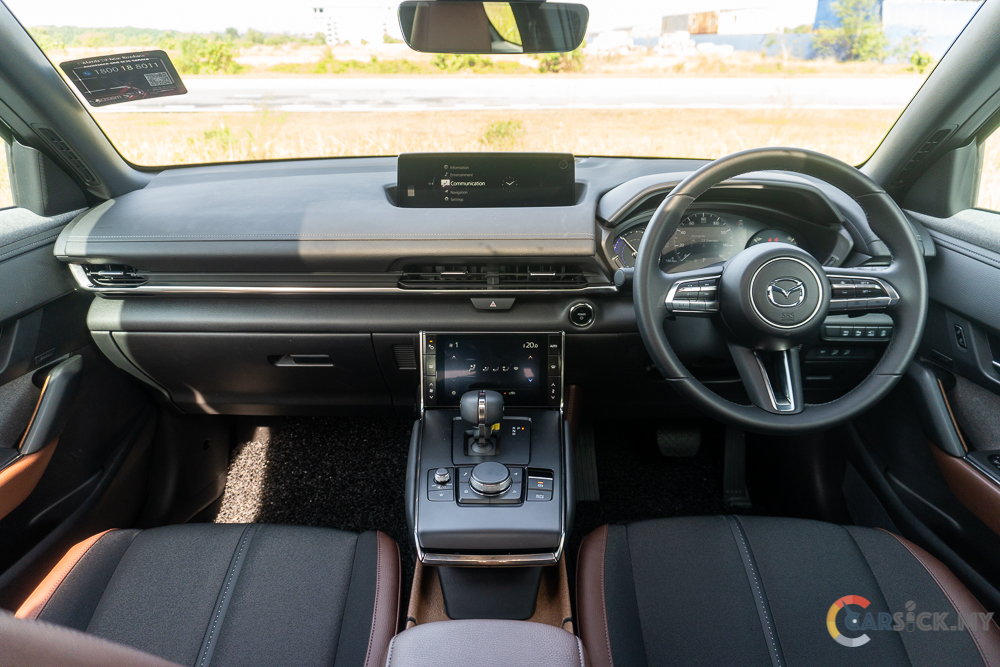
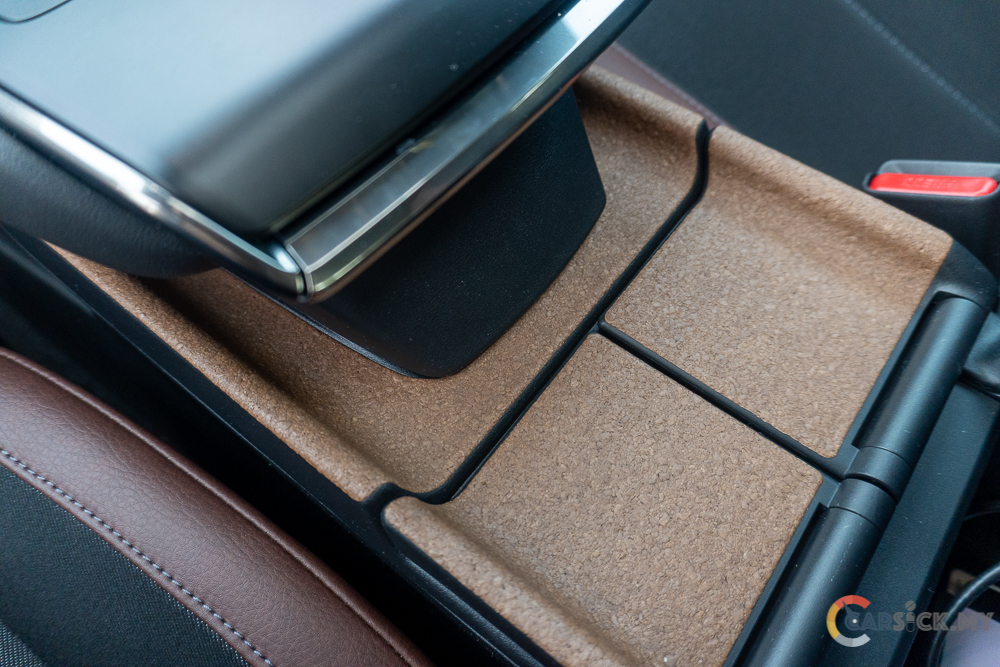
On the dashboard, the MX-30 comes with a highly recognizable infotainment screen and instrument cluster, both sourced from the CX-30. The instrument cluster features a 7-inch digital speedometer, while the fuel gauge has been swapped out for a battery gauge. Additionally, a heads-up display is included to assist the driver in maintaining their focus on the road. As for the infotainment screen, the MX-30 boasts an 8.8-inch infotainment screen that boasts high resolution visuals. Equipped with a high-definition 360-degree camera, this feature enables the driver to park with greater accuracy. To enhance in-car entertainment, a 12-speaker Bose premium sound system is also integrated into the vehicle, and it sounded even better than the Bose system found on older Mazda models, including the CX-9 flagship SUV. 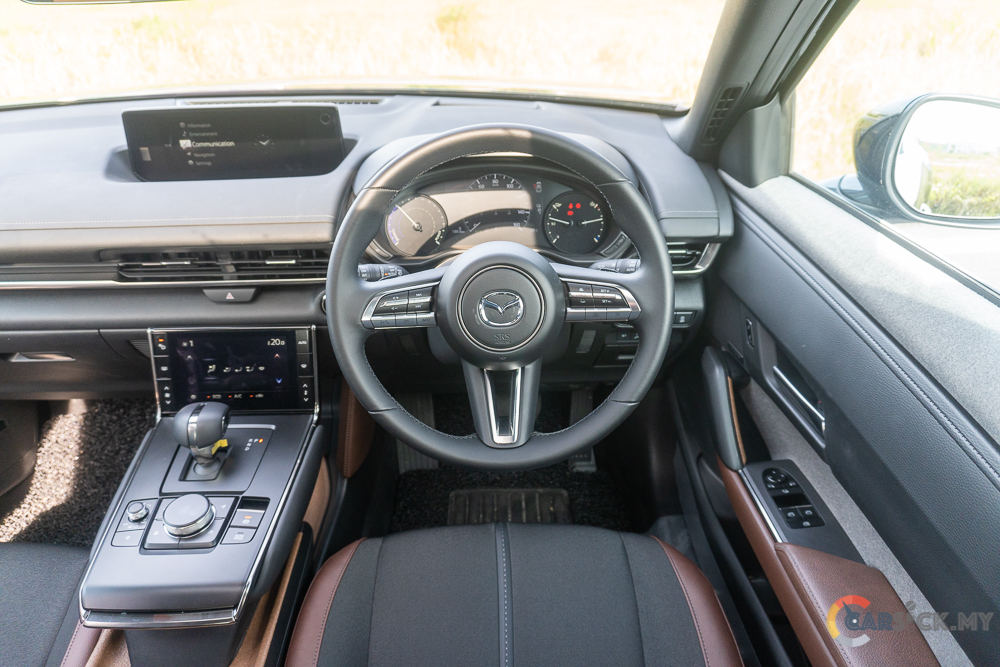
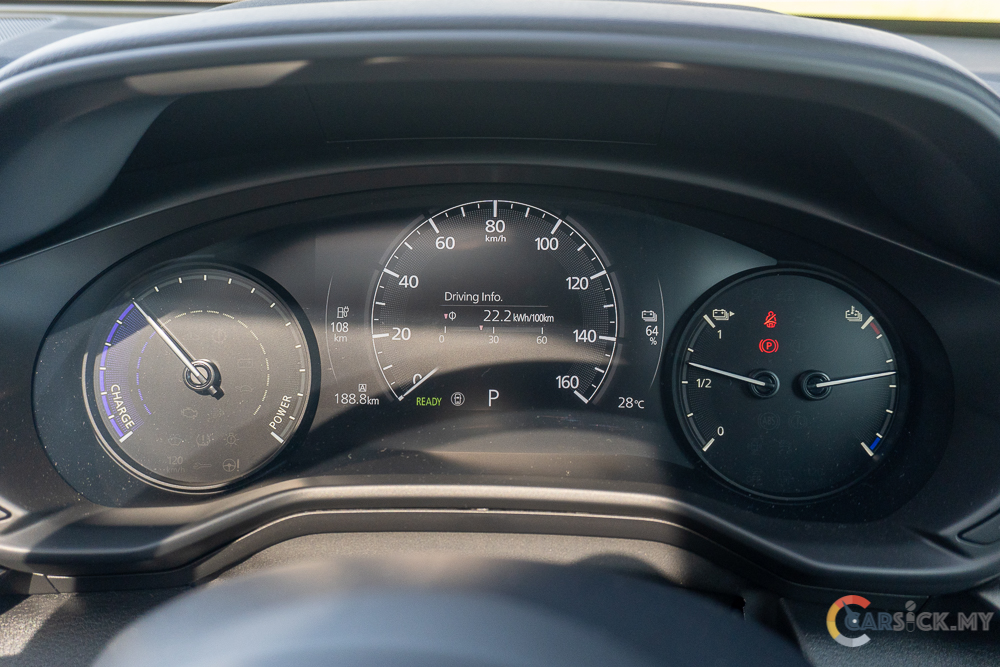
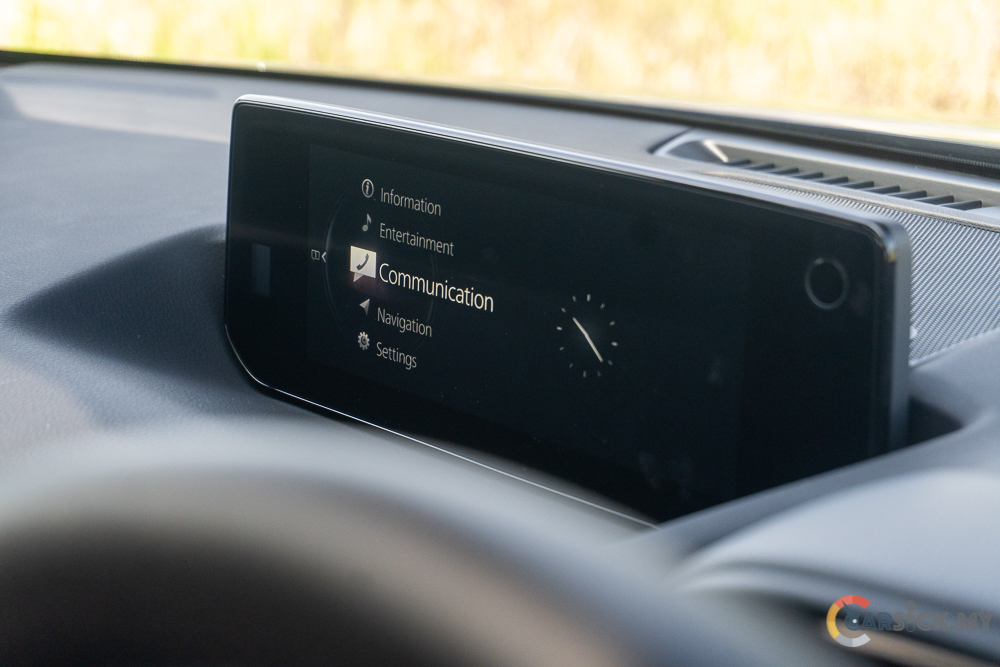
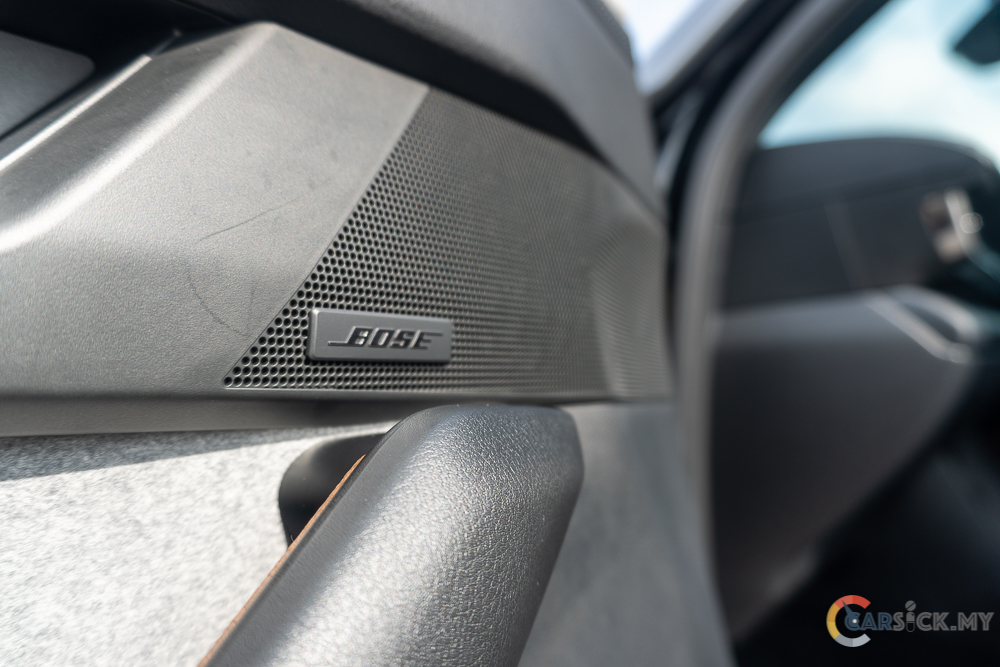
Other than that, the MX-30 boasts several exclusive features, including its distinct climate controls. Equipped with a screen that grants easy access to climate functions, this system is complemented by physical buttons that facilitate adjustments without distracting the driver’s attention from the road. Additionally, the MX-30 introduces a new electronic gear lever next to the climate controls, which provides a comfortable grip and sets it apart from any other Mazda model. 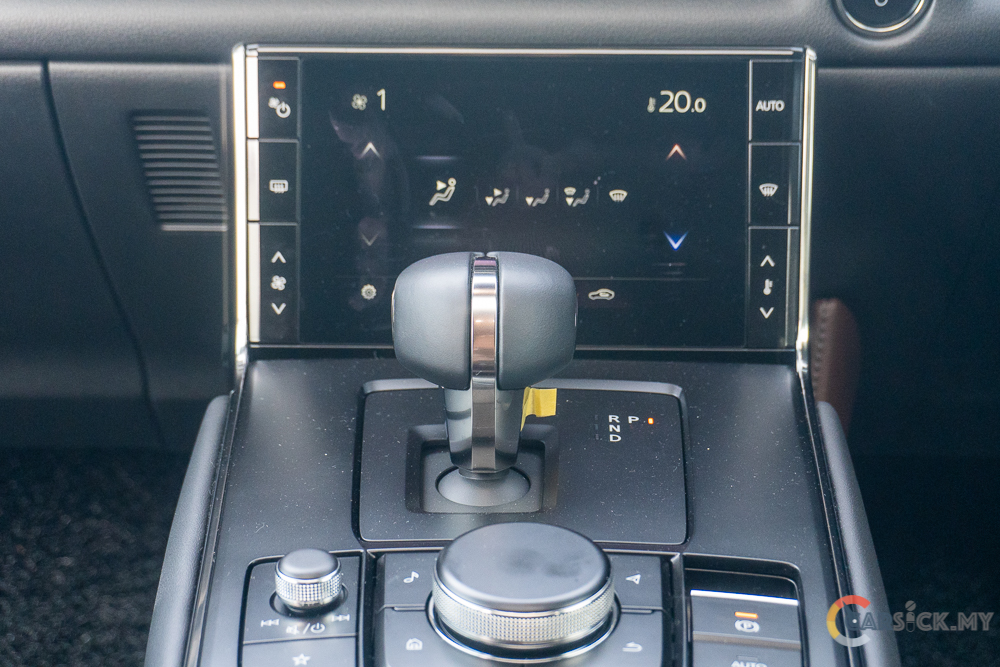
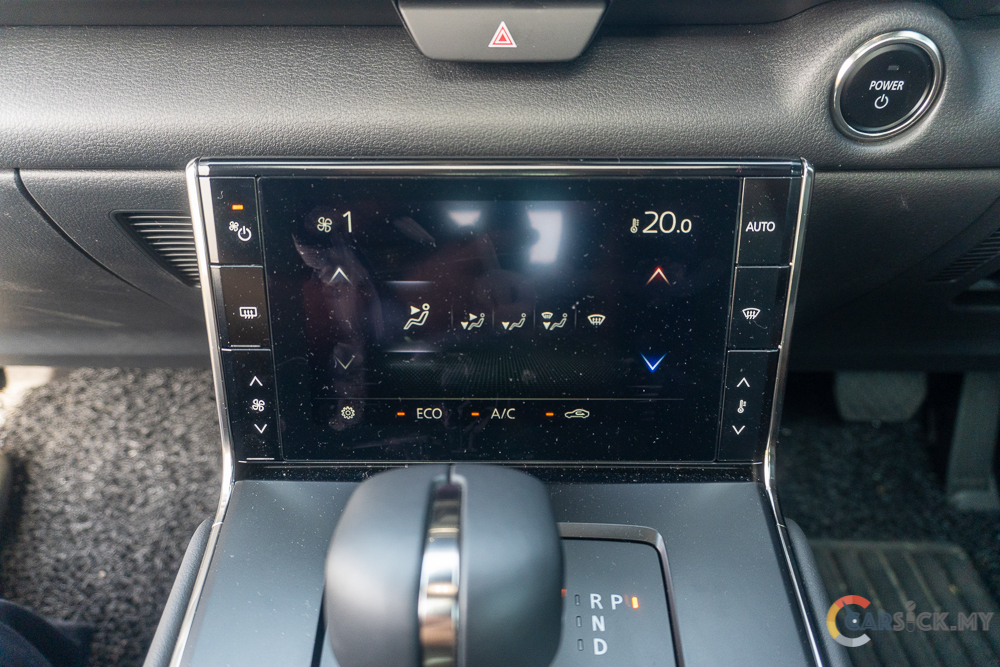
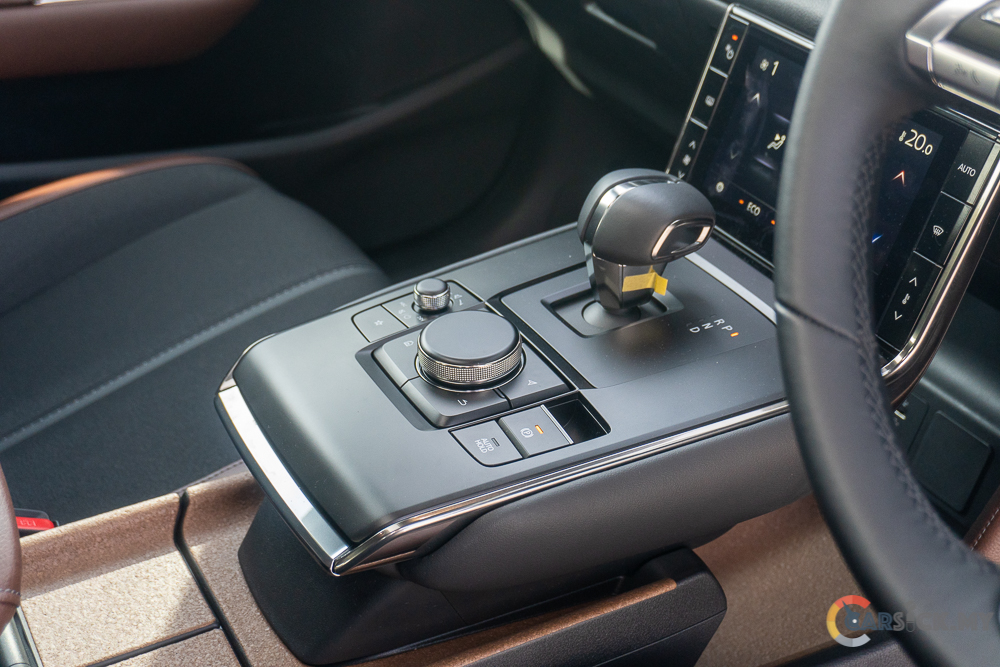
As you take a seat in the driver’s seat, you’ll immediately notice the ergonomic design of everything around you. The windscreen, with its steep angle, also enhances the SUV driving experience. However, the driving position itself is on the sporty side, thanks to the tall center console and shoulder line creating a cocoon-like feeling. The center console provides ample storage space, and even features an additional compartment located at its lower section. 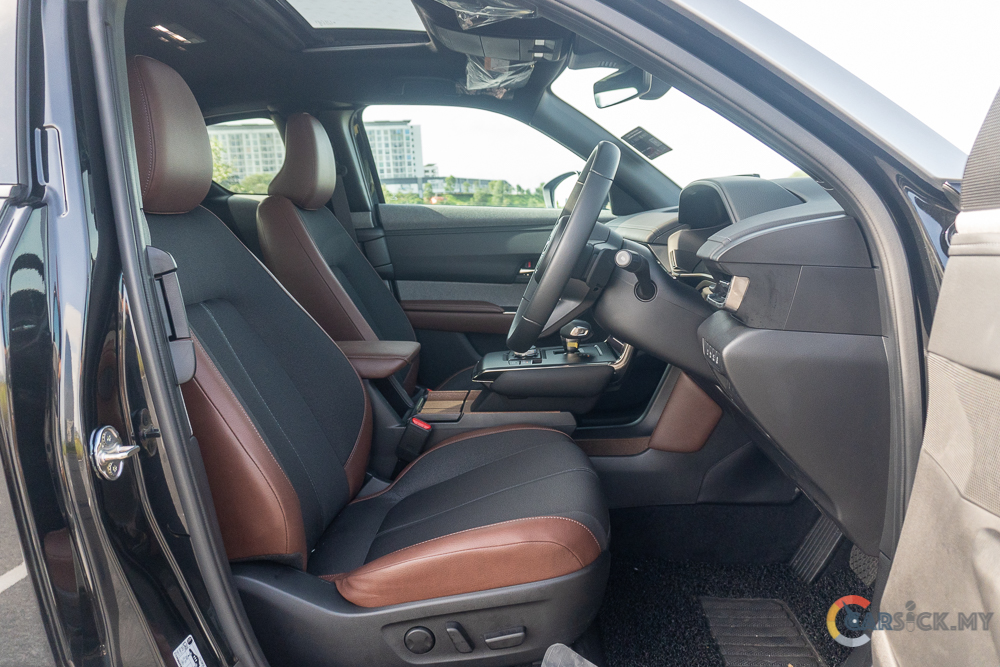
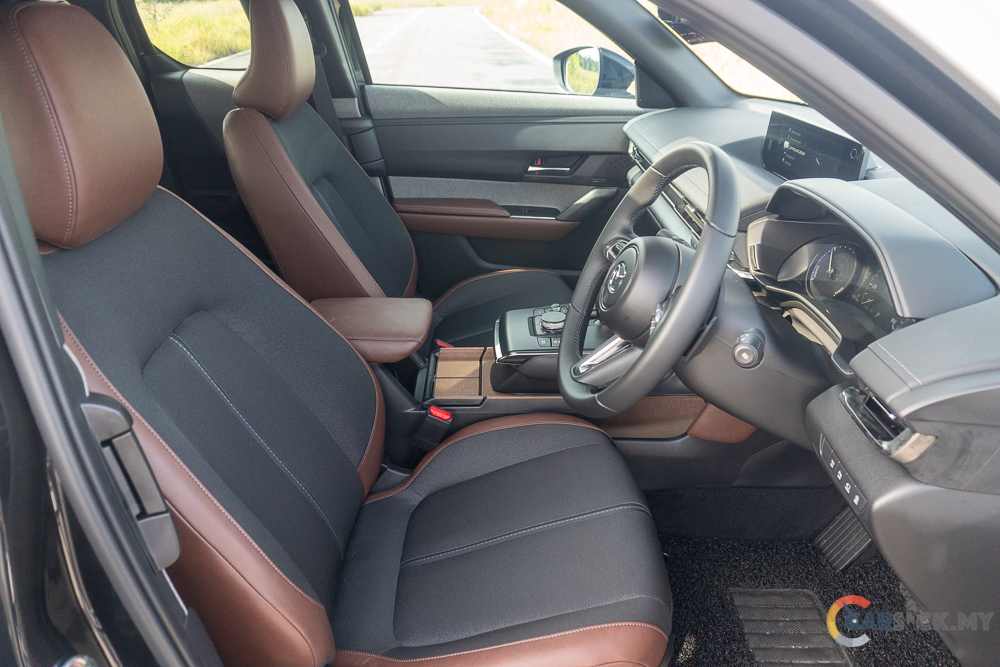
Coming back to the driver seat, the driver’s seat has electrically adjustable features to help achieve the desired seating position, whereas the passenger side only has manual adjustments. As the driver’s seat is equipped with electric adjustments, there is a boss switch located at the side of the seat for rear passengers to adjust the seat before exiting the vehicle. The suicide doors make it easy for rear passengers to enter and exit the vehicle. Although the back seats may appear small, I was able to fit comfortably for a brief journey without any issues. However, it is worth noting that the limited amount of light in the rear may make the back seats feel claustrophobic to some passengers. 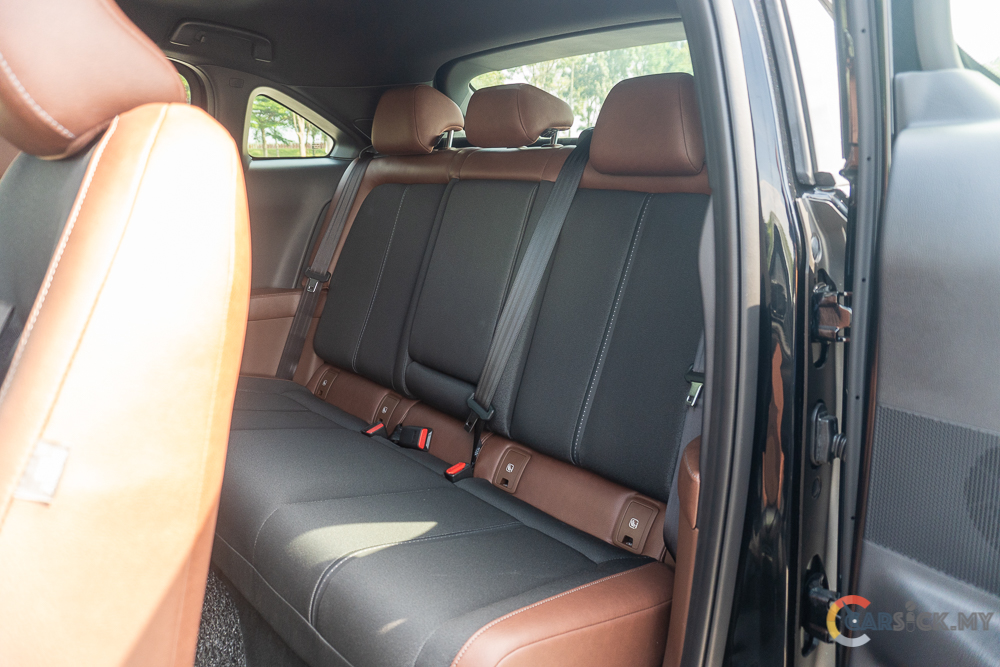
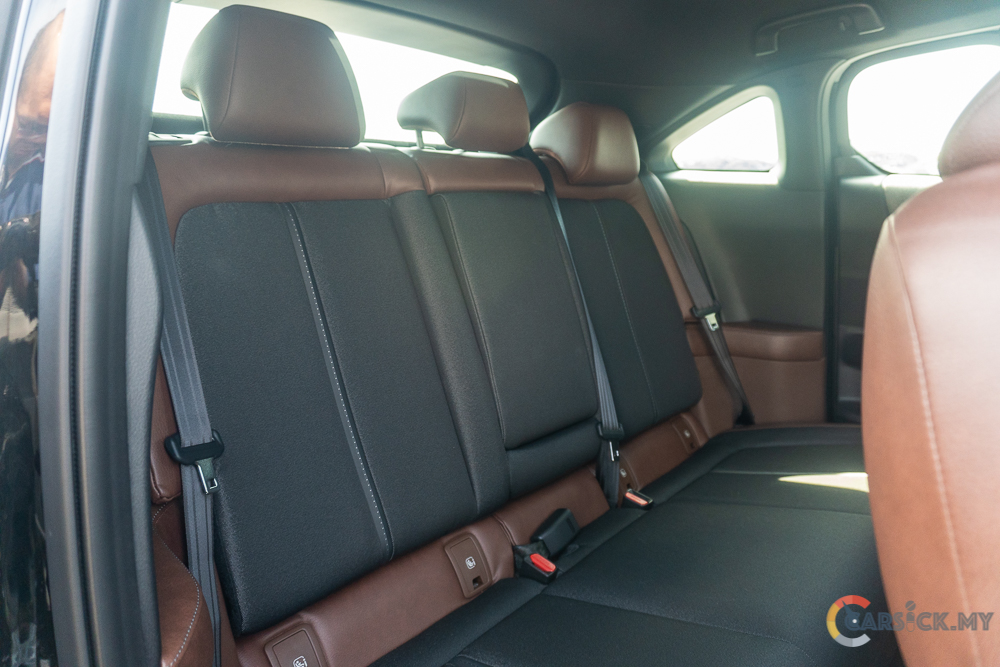
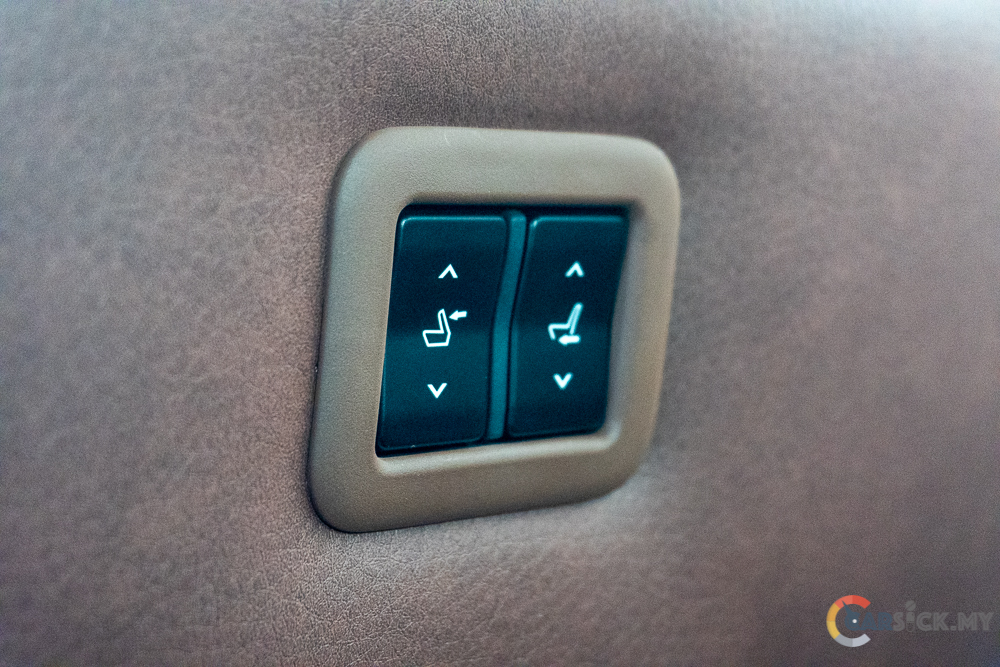
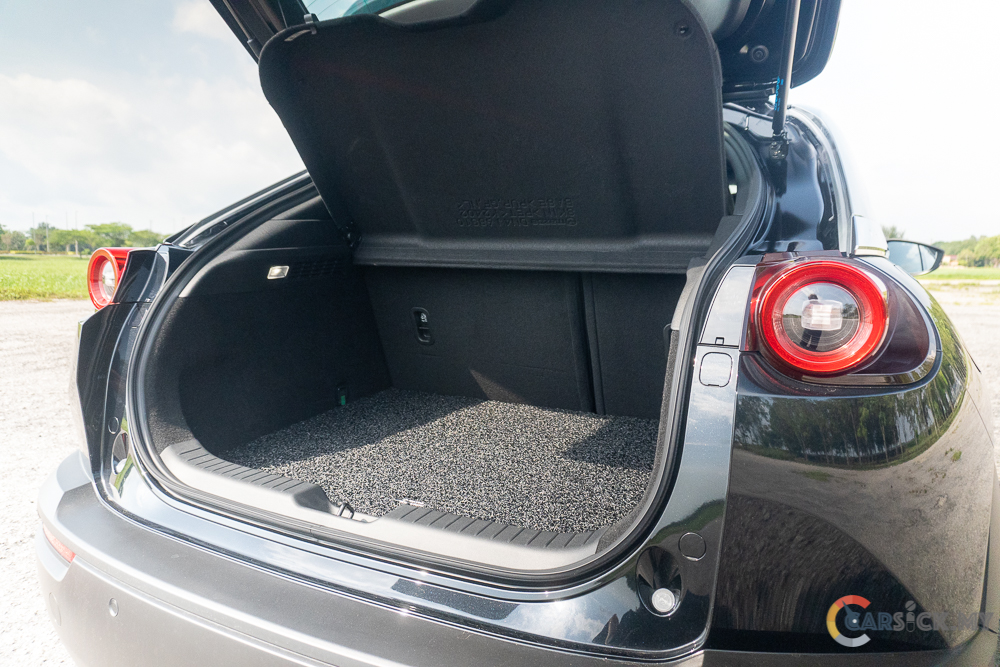
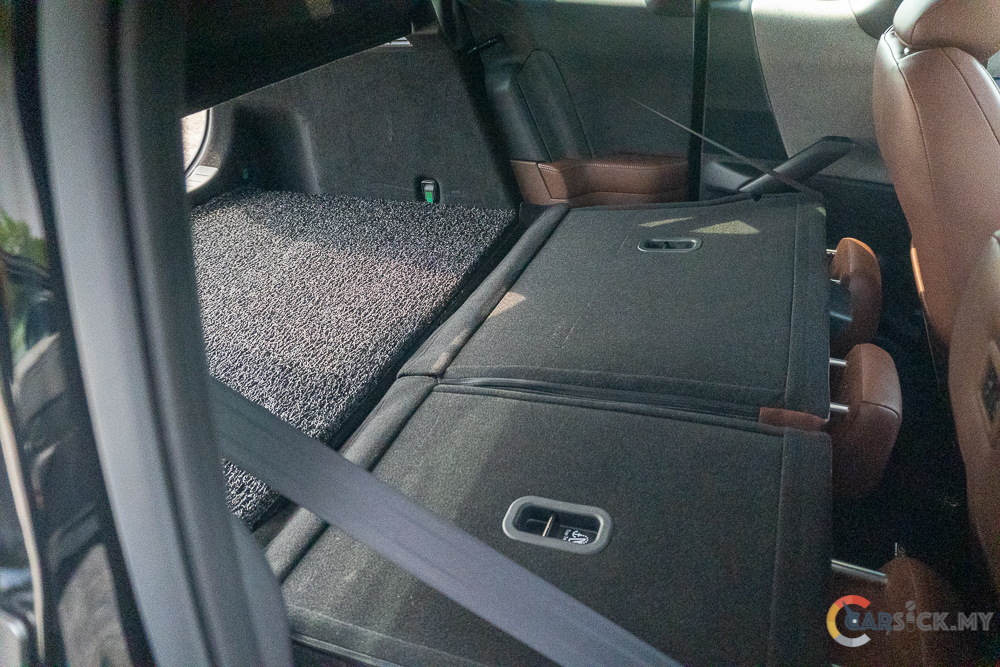
As for propulsion, the Mazda MX-30 is powered by a single electric motor that sends power to the front wheels. This EV is equipped with a 35.5kWh battery that provides a theoretical range of 199 km. Despite its modest battery capacity, the electric motor delivers a total output of 143 hp and 271 Nm of torque. The MX-30 has a top speed of 140 km/h and can accelerate from 0 to 100 km/h in 9.7 seconds. 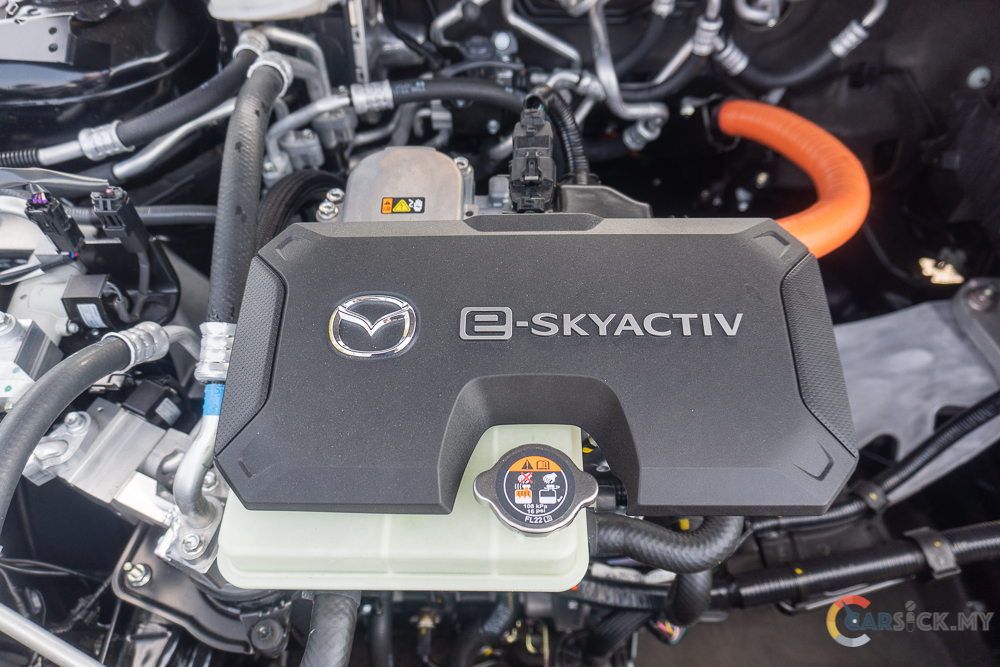
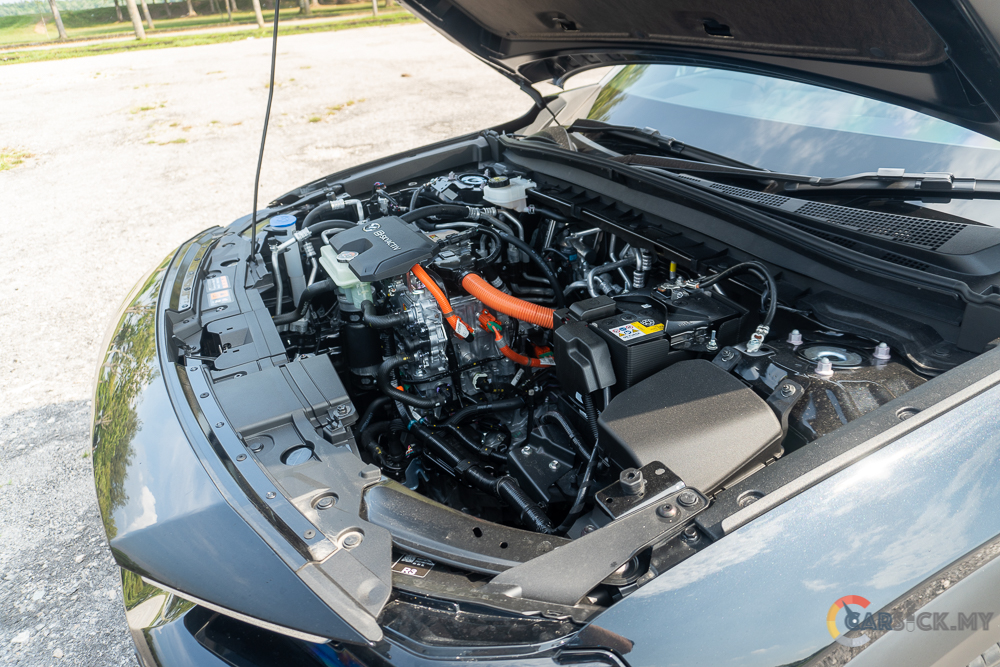
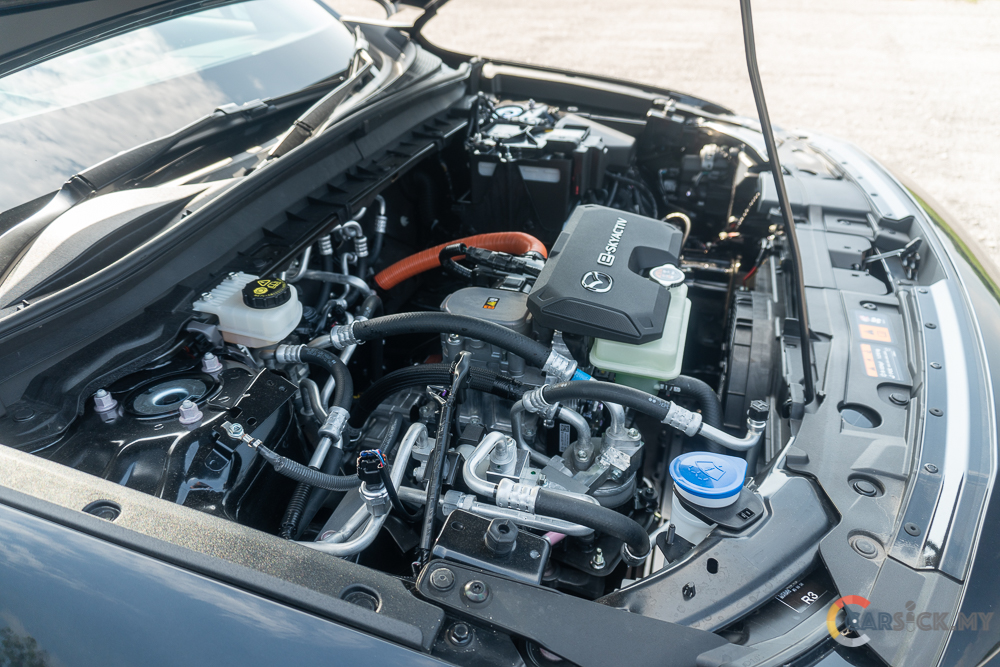
Despite its modest power output, the powertrain’s instantaneous torque keeps the vehicle feeling agile. It can easily keep up with the traffic, but once it surpasses 100 km/h, the electric motor begins to feel strained. By precisely controlling the torque delivery, this prevented torque steer from the front wheels. However, since I had limited time to test the MX-30, my brief evaluation yielded an energy consumption figure of 22.0kWh/100km on average.
Regarding charging, the MX-30’s petite battery purportedly doesn’t require an excessive amount of time to recharge. However, to safeguard the battery’s lifespan, Mazda has restricted the charging speed for this model. Despite being fully charged, the vehicle’s range falls short of 200 km, which can provoke a sense of range anxiety while driving the MX-30. 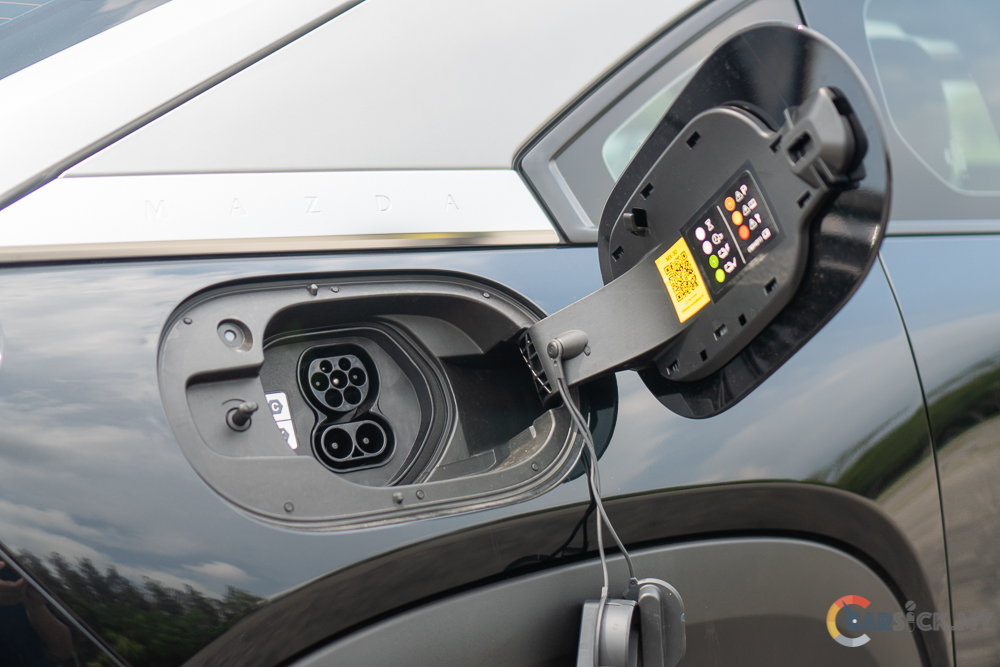
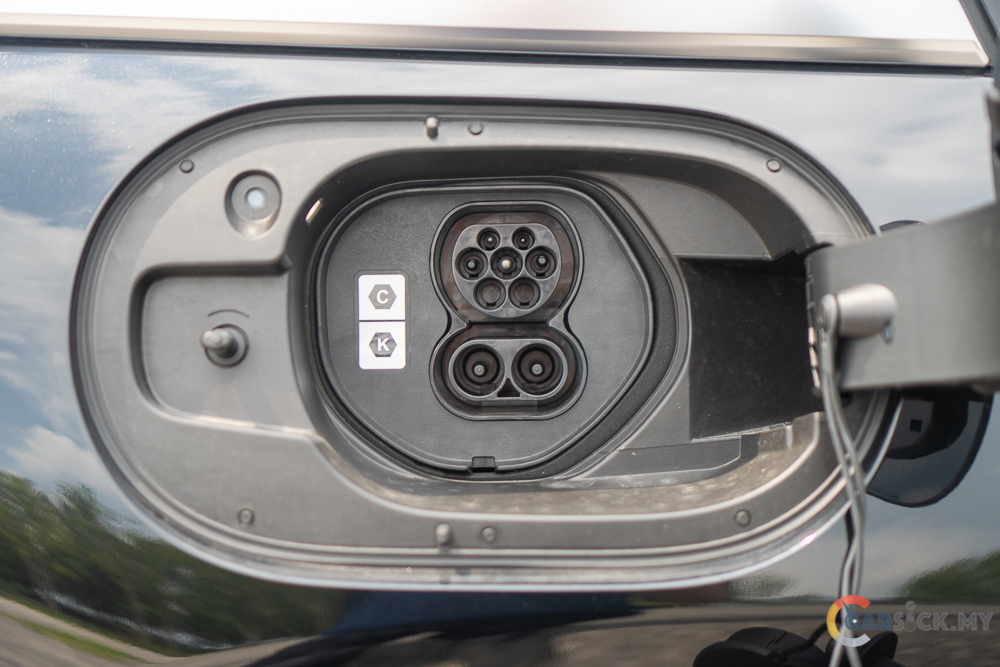
Regarding handling, the MX-30 exhibits exceptional balance. Its steering is precise, instilling drivers with the confidence to navigate corners with agility. Despite being an electric vehicle, the MX-30 changes direction with remarkable speed, largely due to its relatively lightweight. Additionally, the vehicle’s suspension is more yielding, providing a comfortable ride on bumpy or irregular roads. However, it may bottom out when traversing tall humps occasionally, and the soft suspension results in noticeable body roll while cornering. 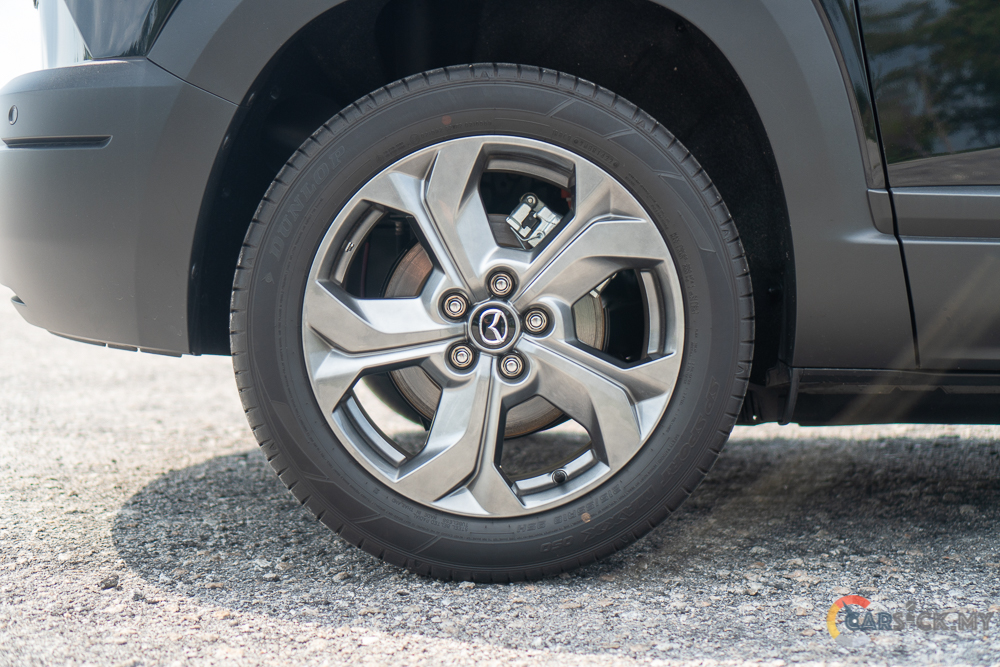
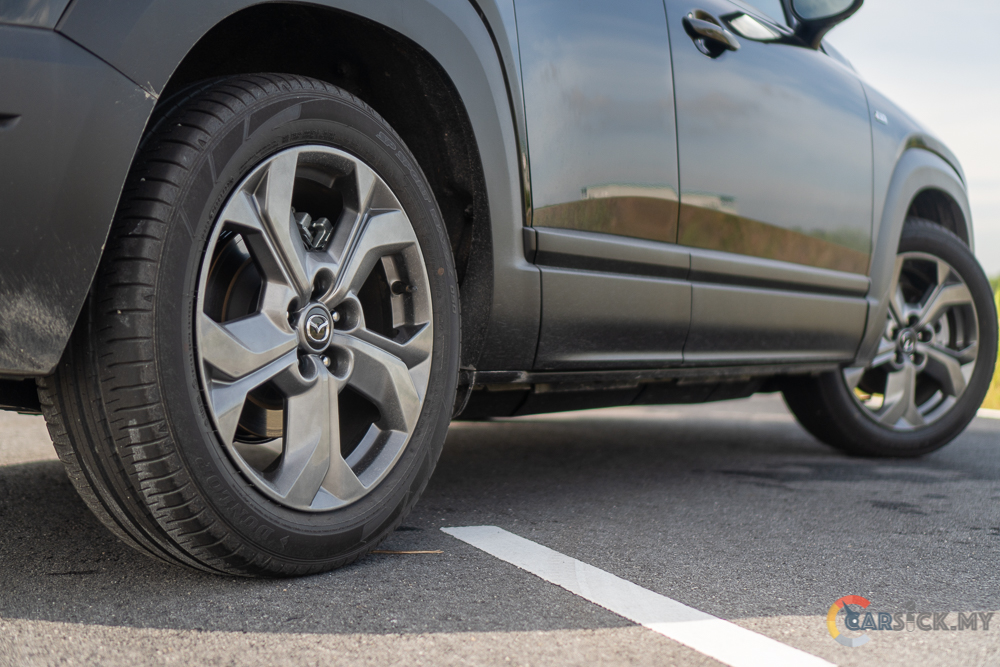
In terms of the brakes, the MX-30’s regenerative brakes are not particularly strong, so the physical brakes are often needed for sufficient stopping power. However, for city driving, the physical brakes are adequate. As with all electric vehicles, the MX-30 is equipped with various safety and driver assistance features to enhance safety. Among the safety systems are seven airbags, Anti-lock Braking System (ABS), Electronic Brake-Force Distribution (EBD), Dynamic Stability Control (DSC), Brake Assist (BA), Traction Control System (TCS), Emergency Stop Signal (ESS), and Hill Launch Assist (HLA).
Additionally, the driver assistance systems available on the MX-30 include Adaptive LED Headlights (ALH), Blind Spot Monitoring (BSM), Rear Cross Traffic Assist (RCTA), Front Cross Traffic Assist (FCTA), Lane Departure Warning System (LDWS), Lane Keep Assist System (LAS), Driver Attention Alert (DAA), Smart Brake Support (SBS), Mazda Radar Cruise Control (MRCC), and Cruising & Traffic Support (CTS). 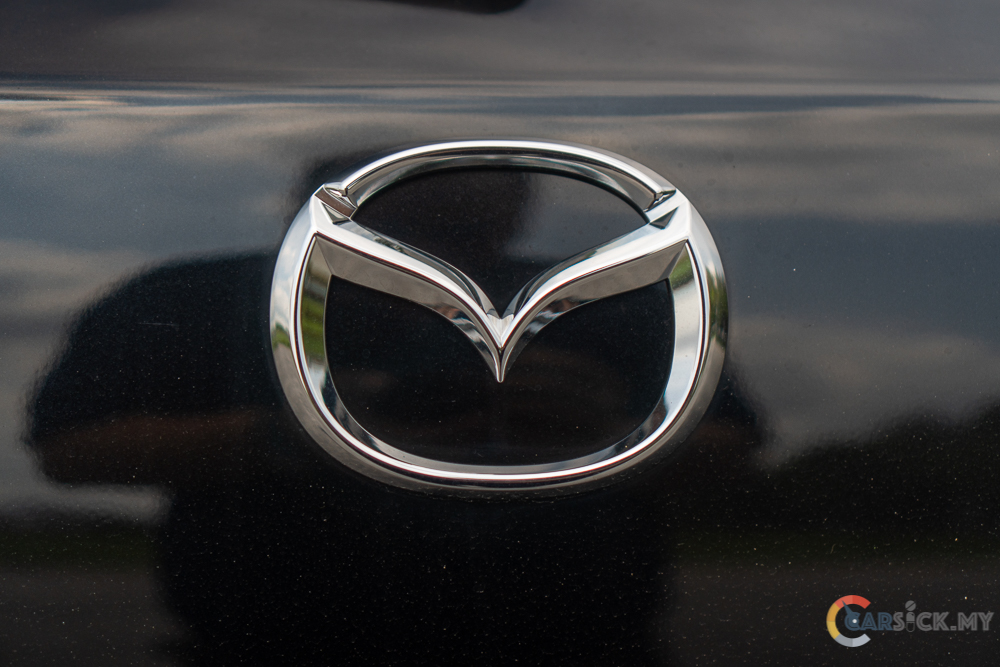
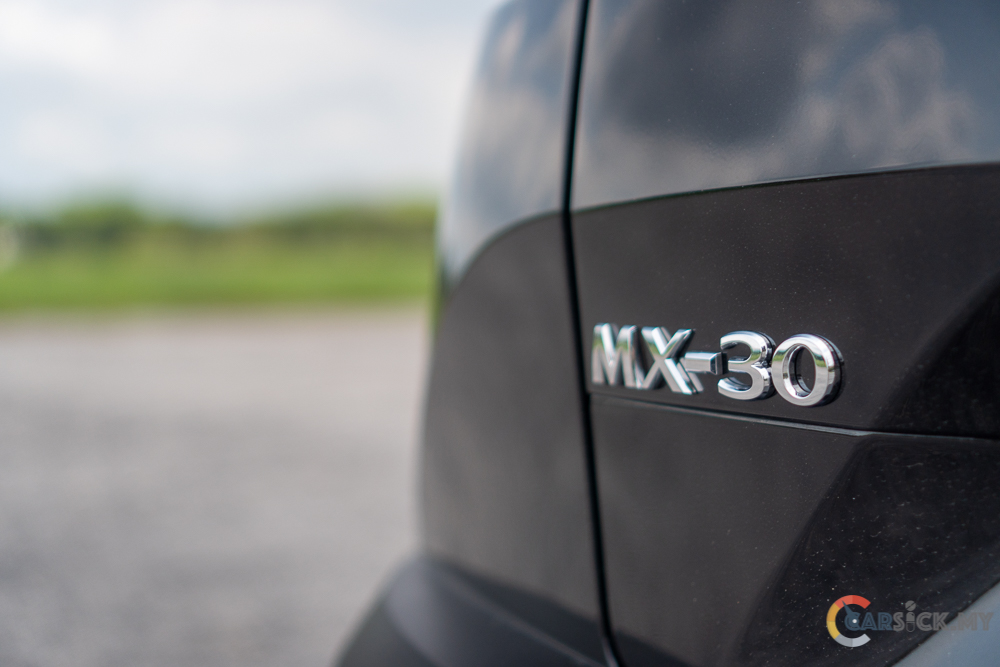
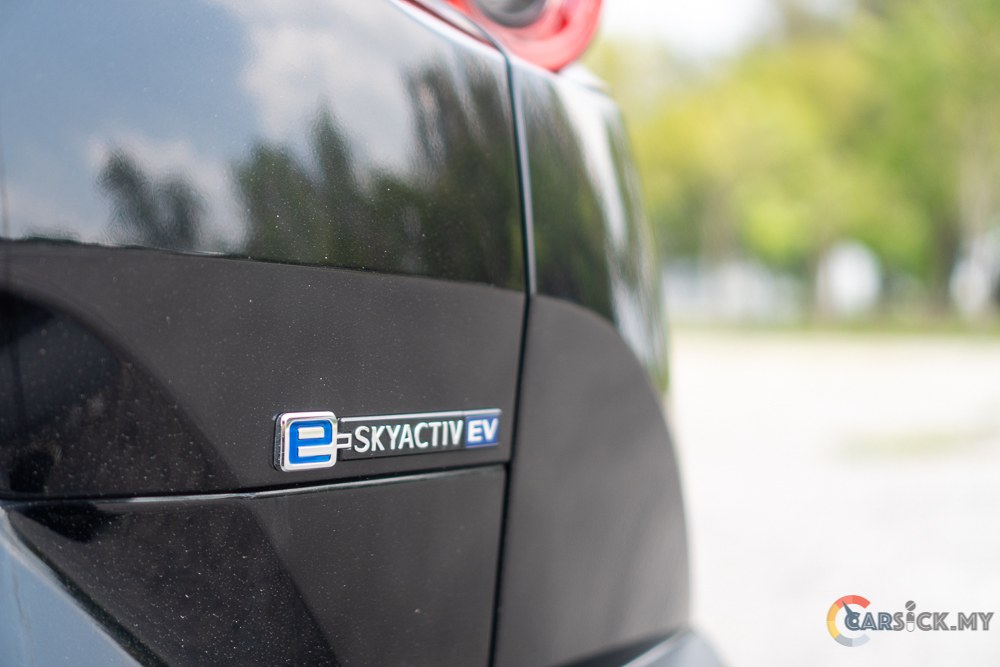
Although the MX-30 offers a pleasant driving experience as an electric vehicle, its limited range makes it unsuitable for longer trips where one can really appreciate its exceptional handling. However, priced at RM 198,780.00, the MX-30 is a suitable option for urban driving. Its compact size makes it easy to maneuver and park in the city. If Mazda Malaysia were to introduce a range extender version of the MX-30, it would likely make more Malaysians feel at ease driving it for longer distances.
Check out full photo album here. 